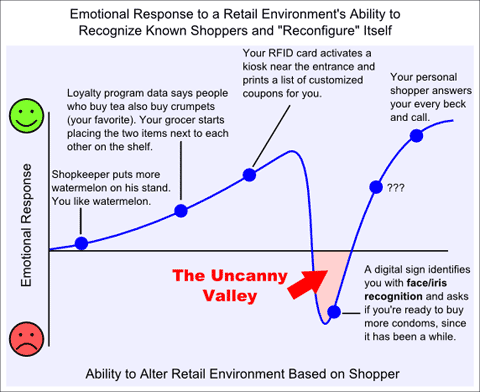It's been a while since I wrote about making effective digital signage content, and in fact these days I don't get the opportunity to focus in on content strategy with clients nearly as often as I'd like. And that's a shame, since even after a decade of considerable growth (I think it's fair to say that digital signage in nearly all forms is solidly in the "mature" section of the technology catalog) I frequently come across signs in serious need of improvement. In just the past few weeks I've noticed a half dozen offenders, ranging from QSR menu boards to corporate lobby screens. But the real catalyst for this post came from research house eMarketer, who noted that even in 2016 lowly email marketing outperformed the more fashionable social media and paid search industries. Perhaps most interestingly of all, the humble one-size-fits-all email newsletter was still found to be the workhorse of the industry, offering a greater return per dollar than far more elaborate hypertargeted mailings. In light of the fact that marketing automation platforms these days will slice and dice content into dozens or hundreds of different forms in an attempt to best fit each recipient, that's pretty telling, especially as it flies in the face of the conventional wisdom in the digital signage arena.
The drive toward automating content production on digital signage networks is nothing new. I remember listening to Jeff Porter (a longtime VP at Scala) give a presentation on the subject well over a decade ago, and since then the barrier to entry for auto-generated content has fallen shortly. For large networks the need to automatically customize content playback can be particularly important, since it quickly becomes unwieldy (and expensive) to create, catalog, organize and deploy multiple variations of even a simple piece of content. Tech companies were quick to answer the call, and today there are hundreds of solutions on the market that will ingest your data inputs and spit out as many different output variations as you care to make. This kind of wrote work is exactly the type that benefits from automation, after all.
I continue to read about new tech developments in face recognition, beaconing, etc. that put a lot of stock in being able to show a highly-targeted spot to a specific person as they make their way about in the real world. At one point in time, this seemed like a pretty good idea to me. Now, though, I'm in the same boat as the email marketers mentioned earlier on. If I had to, I'd bet that quality content that follows many of our best practices for digital signage content and has high production value will work better (and be more cost effective) than content that bends over backwards to hypertarget to a very small group of people (or even just an individual). I don't expect that we'll ever see a well-controlled test of this theory given how ridiculously expensive it would be (and paradoxically how spendthrift networks can be when it comes to making content), but if the companies like P&G have difficulty getting hypertargeting to work online, I have to imagine that the vast majority of brands advertising on digital signage networks will suffer the same fate in their much less forgiving real-world settings.


 Subscribe to the Digital Signage Insider RSS feed
Subscribe to the Digital Signage Insider RSS feed